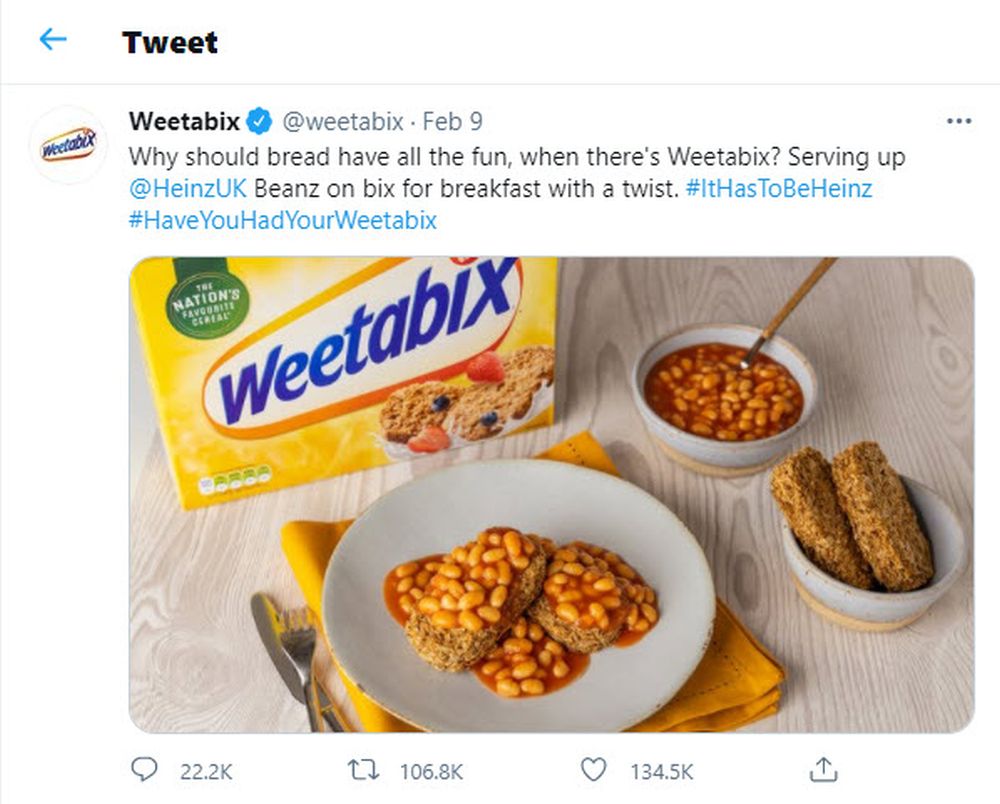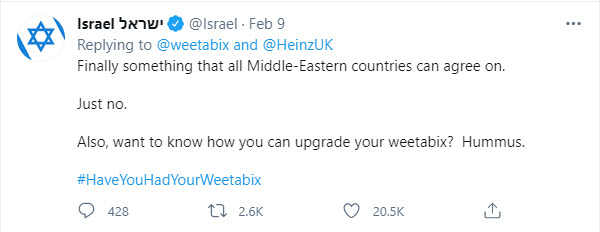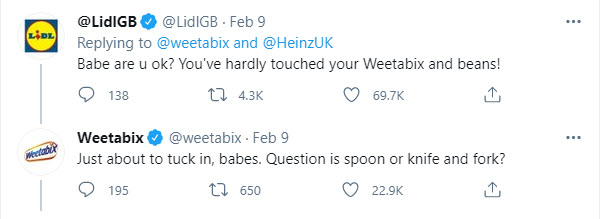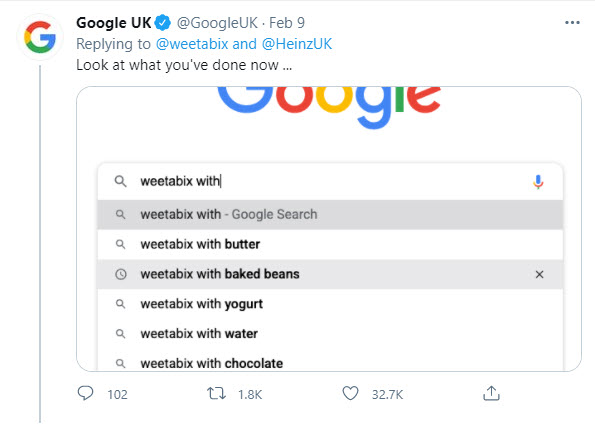Why your social media marketing might not be working

LinkedIn, Facebook, Instagram, Snapchat, Youtube, Twitter, Tiktok – and now we have another social media platform which marketers are moving into: Clubhouse. Tom Fishburne highlighted the absurdity of marketers chasing platforms in his pithy cartoon and blog about it here. Many of my clients have told me they previously tried social media marketing without much success, although their definitions of “social media marketing” and “success” varies widely.
So why do some brands do so well with social media marketing, and so many others fail? Tom’s cartoon was a lightbulb moment for me: I suddenly realised what was going wrong.
Social media is so pervasive yet so transient, you either see it everywhere or if you blink you might miss it altogether. Take Weetabix for example. Frank PR had to persuade their client to run with this social media campaign. It became a viral sensation. In case you missed it, the campaign was triggered by some less well-known posts about using Weetabix in unexpected ways – as a coating for fried chicken for example. Encouraged by this success, they went all out for a deliberately controversial campaign, pairing Weetabix with…baked beans. It went massively viral, not because of the image (yes, it’s gross) but because of that word engagement. Lightbulb moment.

What happened next exceeded all hopes from the agency. Because the Tweet paired two British food icons, baked beans and Weetabix, it encouraged people to respond and they did – in droves. Not just consumers, but other iconic brands too. So much so, it became a game of which brand could come up the wittiest on-brand response. Those responses became the focus of more engagement, and it cleverly put the Weetabix brand in front of all the followers of other major consumer brands. Not surprisingly, the reach was spectacular.

Back to my lightbulb moment. I realised that many traditional marketers had been – and are still – transmitting one-way promotional messages. They are doing this in display advertising, direct mail, on-line advertising and every other channel they can use. When social media became a new channel, they added that and carried on with their one-way communication. True, there was an element of interaction: you could click on a CTA button. Big deal. Social media is all about engagement: comments, likes and shares, so one-way broadcast promotions are simply intrusive irritations. People pay subscriptions so they can switch them off.

Effective social media marketing campaigns are about engagement, which is why the Weetabix campaign was so brilliant. Even if you didn’t want to comment in the debate yourself, watching the engagement of major brands from the side-lines was hugely entertaining.
Another big plus is that if this was an unpromoted tweet it would have been free. Weetabix just posted the photo, two lines and a couple of hashtags before pressing the button. Compare that with a digital media campaign costing £thousands in advert impressions across social media platforms.

You can do effective social media marketing for no cost and anyone can do it. Caveat – you may have to invest to build your brand and followers first – but when you have done that, on average between 10% and 30% of your followers will see your posts. However, there is a big difference between seeing and engaging. The content has to be intentionally engaging which means the viewer is expected to respond in some way. Most importantly, that response must be acknowledged which means a two-way dialogue. This is totally different to traditional, one-way broadcast marketing.

Marketers who create content that triggers response and follow up on those responses with further dialogue are using social media in the way it was intended. Notice the way Weetabix comes back to those responses from other brands and in doing so adds more entertainment value for followers.

You don’t have to be entertaining: there are other forms of value on social media. Asking for opinions, discussing topical issues, offering expert help and advice, responding to queries are all forms of interaction that build engagement. Once people start interacting, they have started the engagement journey and once that starts, momentum grows.
Long before digital marketing existed, the Reader’s Digest Magazine used simple psychology to increase the response rates for their direct mail campaigns to sell subscriptions. The mailer would arrive on the doormat with a thump. It was up to 5mm thick and immediately created curiosity. What could be inside? On opening it up, there were different-sized sheets, pamphlets, envelopes and stickers. You had to work out what they were all for. Then you had to assemble the response and put the correct sticker on the correct envelope and fill in the correct form to claim your bonus prize.
This complexity is counter-intuitive when marketing to today’s time-poor consumer. What Reader’s Digest were doing at the time was building engagement and interaction from the point of opening the envelope. With each action taken by the consumer, they were increasing that engagement. Today, we can apply the same principles to social media marketing. By involving the audience in a two-way interaction, successful brands are getting value from social media.
Brands that simply transmit messages on social media, however well-intentioned, are missing a trick. If your social media marketing campaigns are light on engagement, they are unlikely to deliver an acceptable return on investment. When you create content that promotes two-way dialogue with your audience, you will be on the right road to social media marketing success.
Neville Merritt

